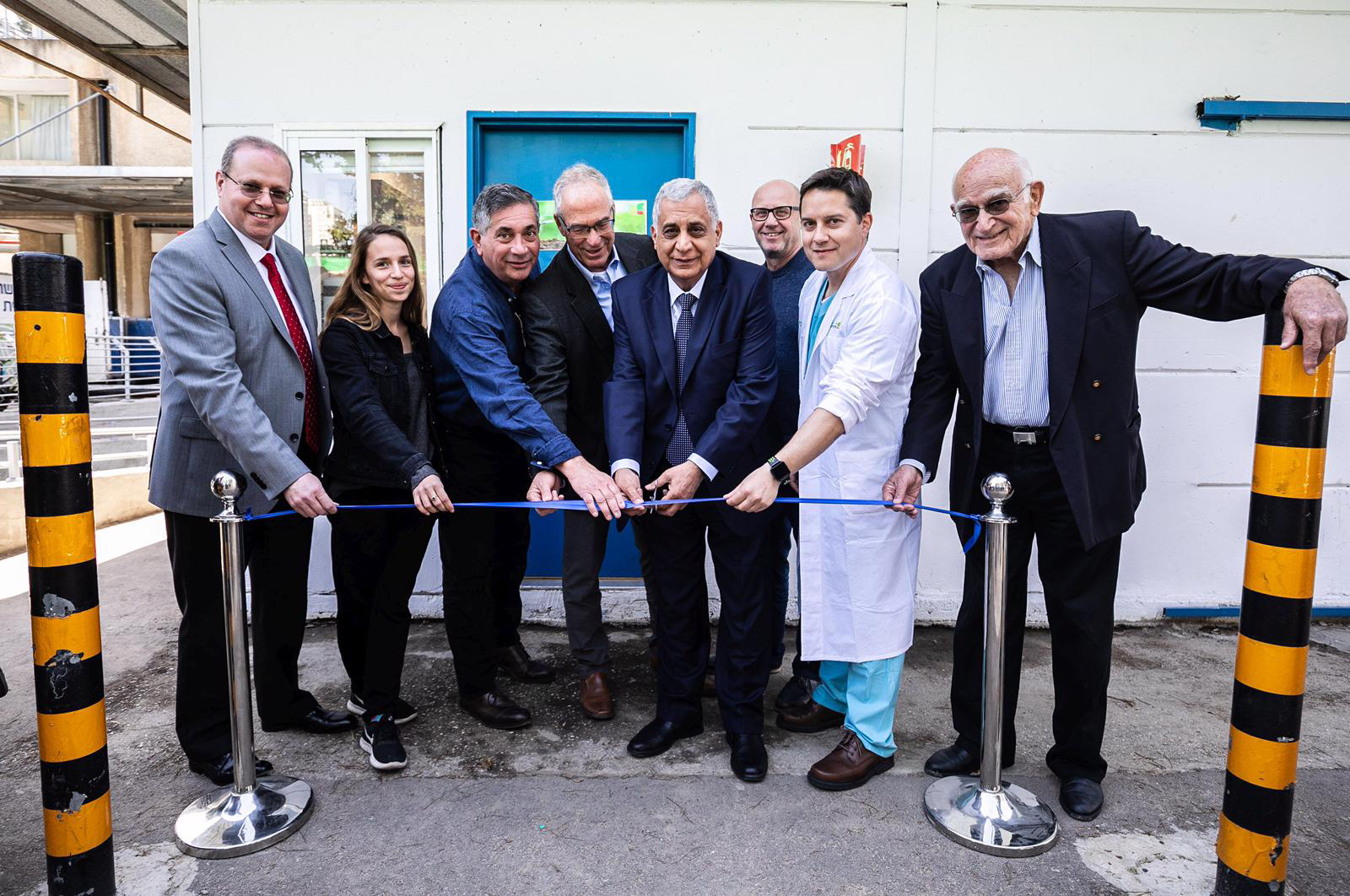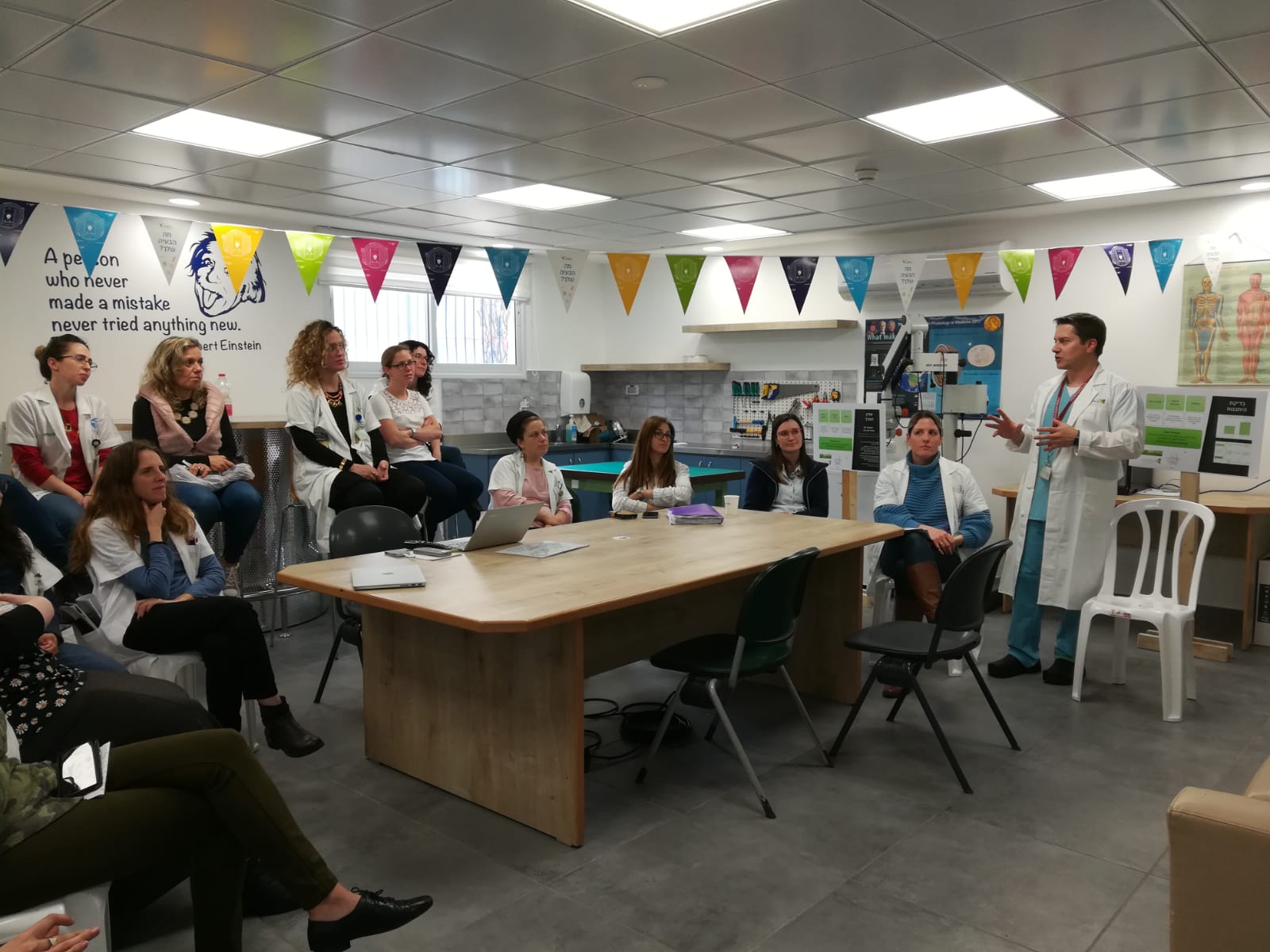Stories
Helping Define the Future of Healthcare in Israel
 Leor Perl (second from right) celebrates the opening of the Rabin Medical Center Innovation Laboratory.
Leor Perl (second from right) celebrates the opening of the Rabin Medical Center Innovation Laboratory.
Most medical professionals who complete the Stanford Biodesign Innovation Fellowship follow one of three paths afterwards: they return to clinical practice with a new understanding of how to address important unmet needs in care delivery, they launch new innovation training programs to share what they have learned with other aspiring innovators, or they pursue health technology start-ups to advance their novel solutions toward patient care. Leor Perl, a 2016-17 Stanford Biodesign Innovation Fellow, is doing all three.
# 1 - Clinical Practice
Upon returning to the Rabin Medical Center in Israel after the fellowship, Perl focused first on his restarting his practice as an attending interventional cardiologist. “Although I was eager to put my innovation training to work, getting back into patient care was my first priority,” he said. “It took me a few months to re-assimilate into the clinical world – stopping for a year isn’t as easy as you might think.”
#2 - Innovation Training
Once settled, Perl began an 18-month effort to build and launch an innovation hub inside the Rabin Medical Center. Located in a “small but sufficient” two-room space, the new Innovation Laboratory supports and facilitates health technology innovation for clinicians and caregivers. The operating model for the lab is based on the Stanford Biodesign innovation process, but adapted for an internal hospital environment. Perl calls it “the Israeli design method.”
The concept of need-driven innovation is the same, but I had to make adjustments because we have different resources and capabilities here,” said Perl. “I am working with health care professionals, not fellows, students, or entrepreneurs.” Accordingly, like Stanford Biodesign, the Innovation Laboratory starts with identifying and then thoroughly characterizing important unmet needs. “But then we utilize a condensed timeline and rely on innovation partners to outsource the invention and implementation parts of the process,” Perl described.
He continued, “The way it works is that anyone in the hospital -- doctors, nurses, dieticians, etc. -- can bring us needs or problems in care they have observed. We work with them to characterize the needs and do early research on the regulatory environment, intellectual property, and the competitive landscape.” If the project still seems promising, they begin to brainstorm possible solution concepts and match the “need finder” with engineers and designers from academic institutions or professional engineers in the business world.
 Leor introduces the concept of need statements to co-workers.
Leor introduces the concept of need statements to co-workers.
#3 - Start-up Development
In addition to maintaining his clinical practice and directing the Innovation Laboratory, Perl is involved in a start-up health technology company. Vectorious Medical Technologies is developing a micro-computer that is implanted into the heart to monitor pressure in patients with heart failure. The goal is to detect and treat pressure changes before patients are symptomatic and need hospitalization.
Following his fellowship year, Perl began putting learnings from the course “immediately back into my role” as the medical director of the company. “We were fortunate to have started Vectorious with a great need and an excellent engineering approach,” said Perl. “But there were many issues we hadn’t thought all the way through. For example, our device is a monitoring solution, so we needed to figure out how to generate revenue from the data we planned to collect. Luckily, we were headed in the right direction to begin with; there is a great need for ambulatory monitoring in chronic disease and telemonitoring is an extremely desirable approach. What was very clear was that the fellowship training spurred me and my team to address questions that are key to bridging the gap between building a technology and actually becoming a product used in patient care in the future.”
Success on All Three Fronts
According to Perl, the Innovation Lab has been received enthusiastically by hospital personnel, drawing the participation of many clinicians and exploring 134 needs in its first year, roughly ten of which are now moving forward towards patient care with three patents issued so far. Some of the projects include a method to reduce perineal tears during vaginal delivery, a system to detect and analyze oral ulcers and a machine that helps the medical team perform external cephalic version, a procedure used before birth to try and turn a baby that is in breech position. Interest has continued to grow, and now Clalit, the healthcare system Perl’s hospital belongs to (and the largest healthcare system in Israel), is working to replicate the hub inside its other hospitals.
“The model works because it encourages caregivers in the hospital to share their insights without worrying whether or not their idea is good enough,” said Perl. “Because we are all colleagues, it’s easier for them to approach us and say, ‘Listen, I have this idea. It’s probably stupid, but...’ In most cases, they are on to something. And I feel like a lot of their great ideas would never have gone anywhere without our little garage-style innovation lab.”
In addition, the network of resources and partnerships the Innovation Laboratory has developed to move promising new ideas forward is rapidly expanding. “Right now, we have agreements with four academic institutions who will pair our clinical personnel with graduate students in appropriate specialties like engineering,” described Perl. “In turn, the hospital provides clinical consultation and support as they work on research and development.”
He added, “We’ve also teamed up with other interesting groups such as the alumni of special Israeli Defense Force units who are brilliant engineers and now innovators in the civil world. We have discovered many opportunities to work with entrepreneurial organizations and build ongoing relationships where we supply the clinical needs and expertise and they bring in entrepreneurship, business, engineering, and design capabilities. So a lot of what we’re doing is building an innovation ecosystem.”
In parallel, Vectorious Medical Technologies is thriving. The company has recently successfully completed first-in-human cases in Europe and in Israel, and is planning to begin trials in the US soon. Despite the buzz around the start-up, Perl doesn’t see himself giving up his practice to focus on innovation full time. “I have always been a physician first,” he said. Moreover, he believes his continuing clinical practice enhances his value as an innovator. “It helps because everything we do revolves around patient care, and because I have a hands-on understanding of physician and hospital stakeholder needs,” he said.
“I’m extremely lucky to be able to combine all of the things I love,” Perl noted. “Doing them all takes lot of energy and many hours of work. But I am definitely not bored!” “When I think about the Stanford Biodesign website opening sentence – “Welcome to the future of healthcare,” I feel this is my opportunity to be part of that, the future of healthcare. Doing this is my greatest goal.”
All quotations are from interviews conducted by the authors unless otherwise cited.
